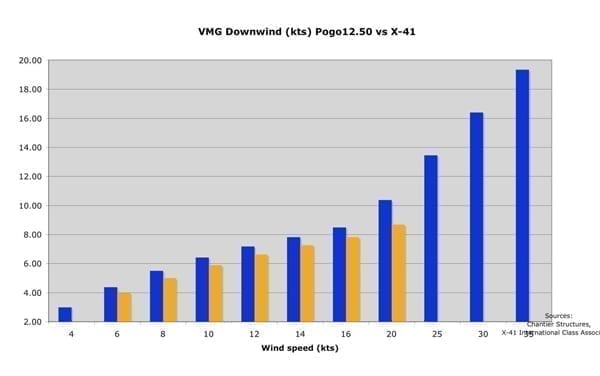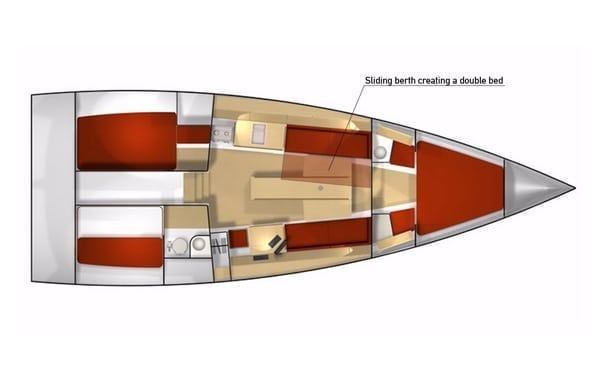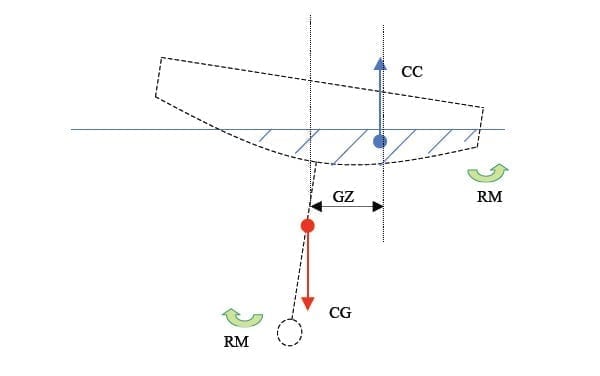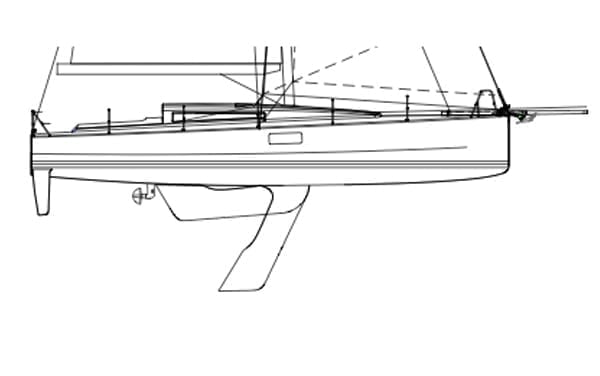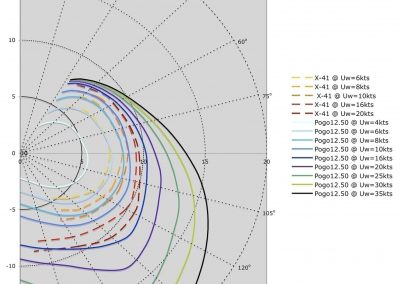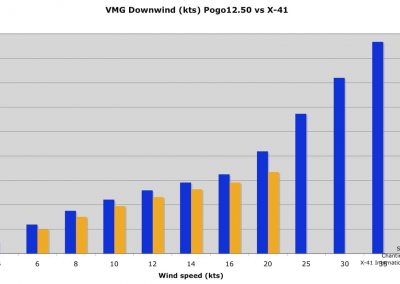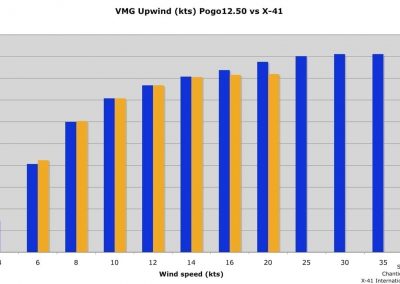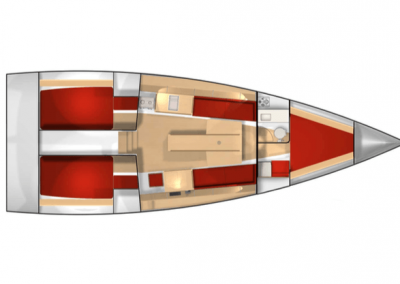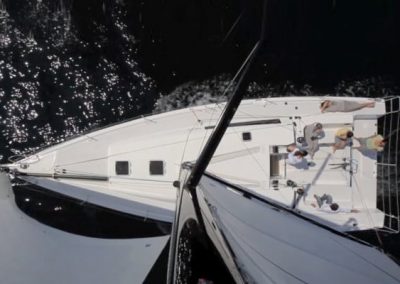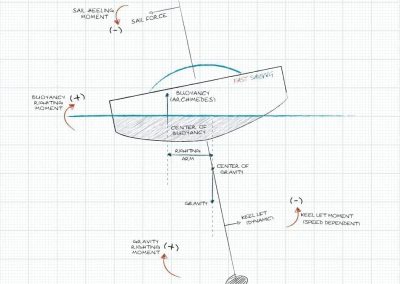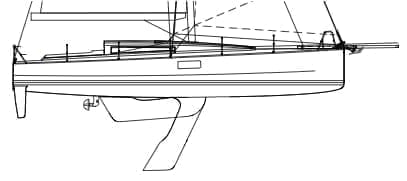Pogo12.50. The reference setter
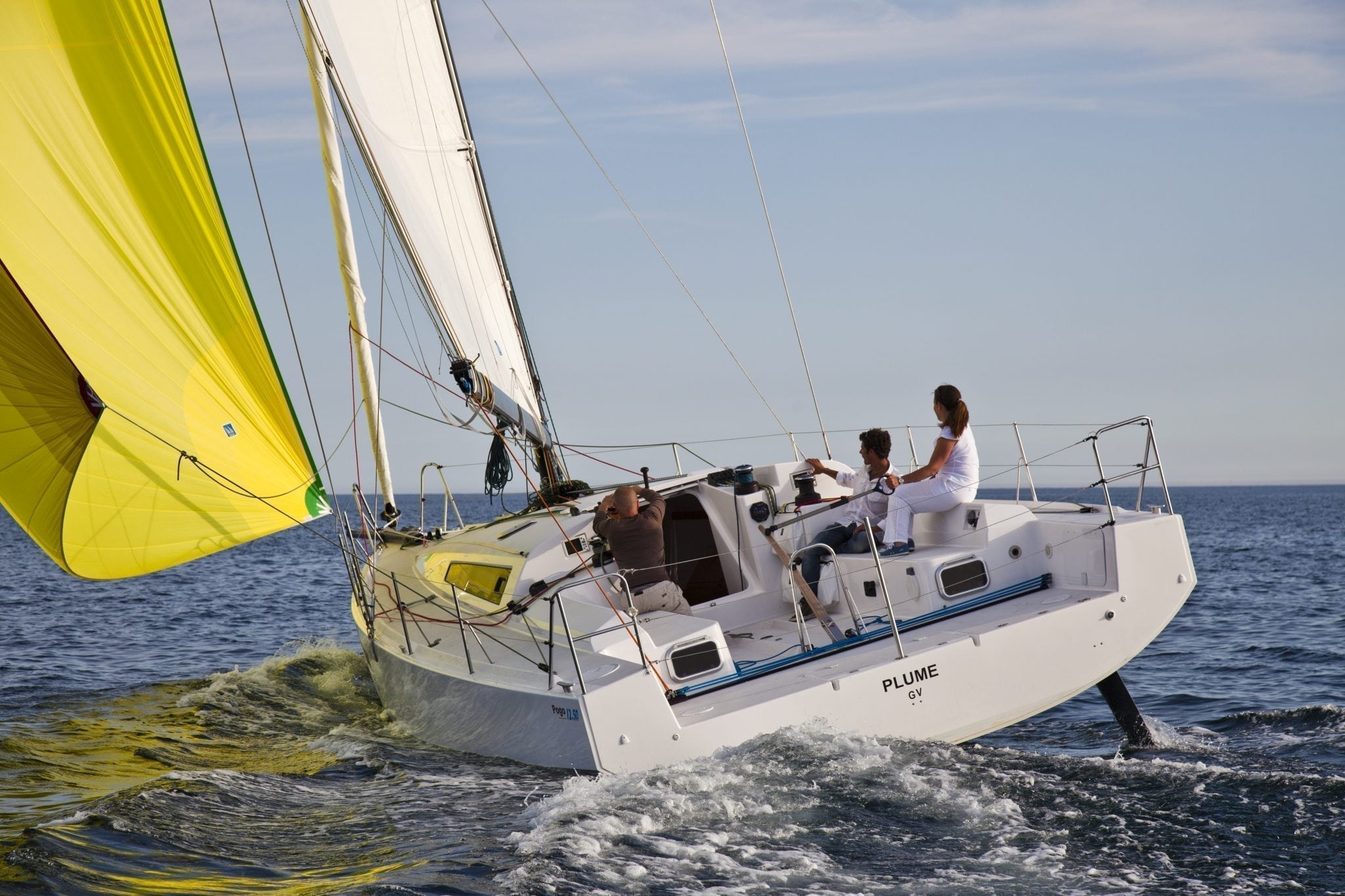
Awarded European Yacht of the Year 2012, the Pogo12.50 became quickly the reference fast cruiser. As of 2016, our fleet consists of four Pogo12.50s, ideal for some “unoficial” match racing! Designed by Finot-Conq and built by Pogo Structures in France, she does not hide her oceanic racing roots: robust structure, wide beam, form stability, double tillers, deep keel, carbon mast, square top main…after all she shares the exact same hull as the Class 40 racer Pogo40S2. With voluminous shape, she offers plenty of cockpit and interior comfort, that can only be found in cruisers at least 10ft longer.
Speed
- Sail area /Displacement2/3 = 34.34 for upwind (D=5.5t, Upwind SA = 107m² )
- Sail area /Displacement2/3 = 69.96 for downwind. (D=5.5t, Downwind SA=218 m²)
Optimized hull:
- Flat hull shape optimized for planing both upwind and downwind
- Pronounced rocker => minimal drag in light airs + bow up when sailing downwind in strong breeze
- At equal true wind speeds up to 10kts, the Pogo12.50 is up to 4kts faster…
- for stronger winds >10kts the Pogo12.50 gets crazy!
- for TWS= 8 – 12 kts they have equal upwind VMG,
- for TWS >12kts, the stronger it blows the more Pogo12.50 outperforms the X-41 in upwind VMG
- Downwind VMG is always higher
Certainly Polar Diagrams are theoretical predictions assuming certain “ideal” conditions (perfect trimming, sails’ conditions, steering etc). However, they do provide however a useful tool when it comes to comparing yachts. Double digit boat speed sensations are now for everybody!
Comfort

Interior and exterior comfort that you can only find in much bigger yachts.
Interiors: 3 cabins, WC with shower, hot water, full kitchen, fridge, storage, excellent ventilation
Deck: Large and unobstructed cockpit, cockpit shower, low diving platform
Sailing fast does not have to be uncomfortable!
Safety
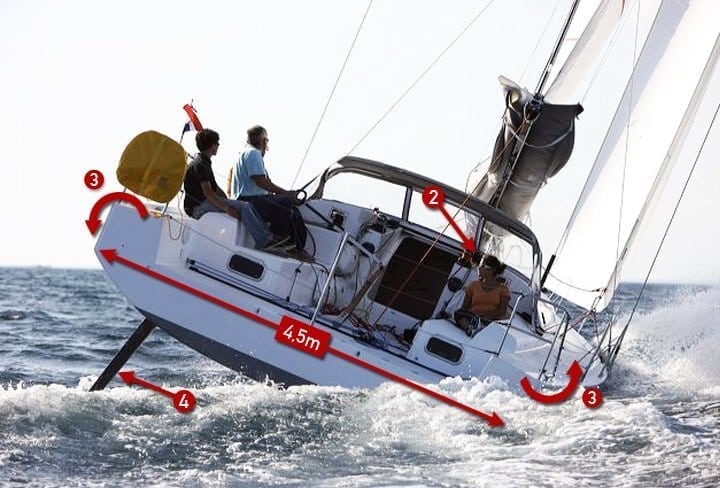
Absolute safety. Sail relaxed, feel and be safe at all times, no compromise on that! Safety comes from 5 basic characteristics: Robust structure, Stability, Unsinkability, Offshore design, Speed potential Robust structure:
- Hull reinforced both longitudinally and transversally
- All bulkheads are structurally integrated
- Extra reinforcement on highly stressed areas of hull and deck (winches, rudder pits, engine etc.)
- Keel pivots backwards to absorb a grounding shock
- Structures naval yard construction quality
Stability:
- Very low center of gravity – below the hull. 1.9 out of the 2.0tons of total keel weight, located at the lowest part from -2m to -3m.
- Keel/Displacement ratio is at 2.0/5.5=36.4% (most cruising yachts have <30% , most racer/cruisers are rarely above 35%)
- Significant righting moment
- Form stability (4.5m beam compared to ~3.5m in conventional boats of similar length)
- 3.0m deep keel
- max righting moment of 6.3tm @ 65o or equivalently max righting arm of 1.145m (Most racer/cruisers are rarely above 0.8m…)
- AVS (angle of vanishing stability) = 124o, with keel down
- AVS = 100o with keel up.
- Even with the keel lifted, the Pogo12.50 could be classified as a Class B Design Category under ISO 12217 (minimum required AVS= 130o -0.005xDisplacement = 130o -0.005×5500 = 102.5o >95o)
- Twin rudders inclined to leeward.
- Always a rudder fully submerged for control.
- Rudder stands ~vertical => no hydrodynamic lift => steering is always soft and responsive
- When downwind both the rudders in the water => extra stability.
- When upwind only one of the rudders remains submerged => reduced drag
Un-sinkability:
- Buoyancy foam below front and aft cabins
- Watertight aft and bow crash compartments
Offshore design:
- All controls and manoeuvres are cockpit lead.
- All winches are close to the cockpit’s central axis. The crew does not have to lean towards the yacht’s extremity for monoeuvring
- No permanently fixed table that can seriously hurt the crew during rough seas
- Banks protect from incoming waves
- Open aft section for immediate drainage in case a wave breaks into the cockpit.
- Watertight sliding door is not the classic detachable panel type, but always in place, and ready to be closed at any time
- Life-raft is stored permanently within the cockpit for immediate access and safe deployment in case of emergency
Speed: Being fast is an element of safety per se:
- reach shelter quickly
- escape from a weather front
Technical Specifications
Pogo12.50
| Hull, deck & rigging | |
| Length overall | 12.50m |
| Max beam | 4.5m |
| Draft | 3.0m/1.4m |
| Light displacement | 5.5t |
| Mast | Carbon |
| Boom | Aluminum/Carbon (only for Hermes) |
| Bowsprit | Carbon, retractable |
| Steering system | Twin rudders, Tiller |
| Motor | Volvo Penta D1-30 HP |
| Propeller | 2-blade folding |
| Navigation Category ISO 12217 | A – unsinkable |
| Sailplan: | |
| Mainsail | Square top 63 m² |
| Genoa | 44 m² |
| Staysail on removable stay | 27m² |
| Asymmetric spinnaker A2 | 155 m² |
| Asymmetric spinnaker A5 | 120 m² |
| Gennaker/Code 0 | 85 m² |
| Interiors / Amenities | |
| double cabins | 3 |
| single bed | 1+1 folding to double |
| Kitchen | |
| WC with shower | 1 |

